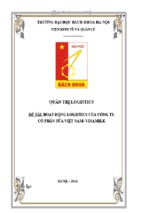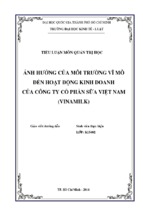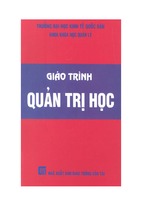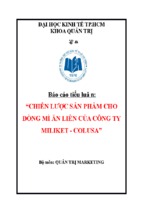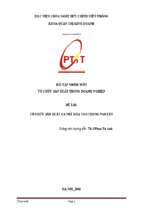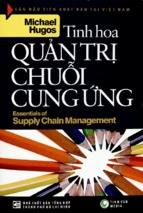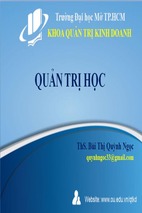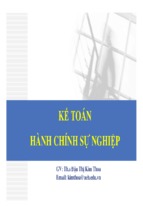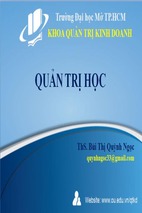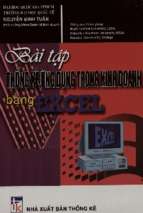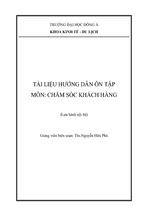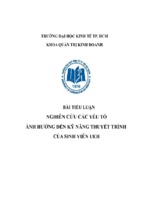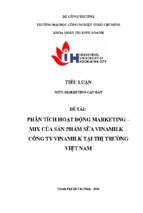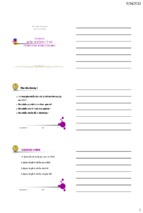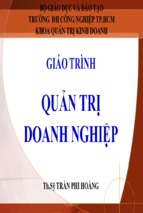166
EXHIBIT 13.2
Age Group
INTRODUCTION TO BUILDING AN INTEGRATED FUNDRAISING STRATEGY
Growth Rate in Users over 65
October 2002
October 2003
Growth
7,642,000
9,554,000
25%
65+
Source: Nielson//NetRatings
The purpose of examining this 65+ audience is again to reinforce that the Internet is not going away. Users of all types are online and the numbers are growing.
From the youngest child to the seniors, the use of the Internet is more and more pervasive every month.
The growth in this audience is good news. Although this doesn’t ensure that your
aging donor file is rushing online, it signals an evolution that will continue to play a
role in what effect online initiatives can have for your whole file. Exhibit 13.2 shows
the increase in usage, just in the years 2002 to 2003.
THE ONLINE EXPERIENCE
For many organizations, there are a variety of ways individuals interact or are involved. Volunteers, activists, and donors all play a vital role in helping organizations
achieve their mission. They are not all the same in age, mindset, financial status, and
other key areas, so it would be a mistake to try and treat them in a one-size-fits-all
approach.
Too often, nonprofits fall into the trap that any organization could—that is, the
inability to understand your audience’s needs or leveraging what you already know
about them. By projecting the internal bias of the internally focused perspective, it
becomes difficult to provide communications and infrastructure based on the needs
of the site visitor, donor, or prospect.
Exhibit 13.3 illustrates how this reality can manifest itself and therefore cause
missed opportunities for connecting your donors and visitors to the site. This should
not be viewed in only the terms of the Internet, but all communications. Although all
organizations are different, the mindset of why people give to particular organizations
is becoming increasingly competitive. Therefore, nothing should be taken for granted.
The most significant disconnect in this chart falls in the area of fundraising. Essentially,
how can I become a member, and if I do, what will you do with my funds?
Both NPO and user data was obtained through a series of surveys. NPO survey
was sent to a sample of 1,100 from their newsletter file. The User data were collected
through two surveys of samples consisting of 4,300 and 8,900 individuals.
PREVENTING THE INTERNET FROM BEING
A LOOSE THREAD
Top-Level Organizational Issues
The biggest hindrance to successful fundraising, especially when it comes to the Internet, revolves around the inability to break down departmental barriers. Although it
is true in all initiatives, the need for interdepartmental collaboration is even more apparent online.
167
Preventing the Internet from Being a Loose Thread
EXHIBIT 13.3
Ranking of Various Web Site Characteristics by Nonprofits and Online
Visitors Shows Different Priorities for Each Group
Characteristics
Easy to use
Significant content about cause
Visually pleasing
Memorable URL
Info about how to get futher involved
Donate online
Info about how donations are spent
Volunteer opportunities
Become member
Advocate for cause
Forum for discussion
NPO
User
1
2
3
4
5
6
7
8
9
10
11
3
1
8
10
4
9
2
7
5
6
11
Source: Network for Good, The BridgeSpan Group, GuideStar
Having worked with a variety of organizations, we have seen many ways that this
factor creates inefficiencies and redundancies, and impacts the bottom line directly. In
some cases, organizations have invested in toolsets that would not be needed if membership could work with communications. In others, advocacy initiatives are not as effective due to the inability to leverage other department’s e-mail addresses.
There are two primary realities that must be understood and addressed:
1. Users do not care about how your organization is structured, so your site’s structure should not directly mirror your organizational structure. Architect the online
experience to the user, not to your organizational issues.
2. Your donors, activists, and other individuals have a relationship with the organization, not your department. Provide a clear communication plan for all of your
segments that intelligently reinforces the organizational mission; don’t “protect”
them for just the use for individual departmental needs.
Setting Combined Goals
As you look at yearly goals or even special campaign initiatives, it is important that
there is an understanding and support of these across departments. Whether you are
fundraising, developing advocacy programs, creating general awareness, or all of the
above, it is vital to have the whole organization understand how these goals interact.
Removing the barriers inherent to the organization will allow you to better communicate with your audience and get the most out of them. If you cannot commit to clearly
defined goals, it will be readily apparent to the user and make it unclear for them, causing fewer conversions.
There are many challenges from a technology and organizational perspective to
this, but they can be overcome. Many organizations that we have worked with run into
issues when trying to organize a campaign that cuts across advocacy and membership. The issues stem from the lack of data integration, multiple records, and even the
lack of sharing of data—meaning, it’s “my” activist, and I don’t want you soliciting
them for a fundraising campaign or vice versa. Specific to fundraising, organizations
168
INTRODUCTION TO BUILDING AN INTEGRATED FUNDRAISING STRATEGY
struggle with the notion of online numbers versus traditional fundraising goals. In our
experience it is best to have a single goal since much of what we are doing cuts across
media. When we discuss tactics on pre-e-mail appeals and other similar methods, it
becomes clearer that without a single goal, there is difficulty in really defining what is
a Web gift or a response to a traditional solicitation. After all, when push comes to
shove, once the credit card clears, it is all the same kind of money.
THE TRUTH ABOUT DONORS
Simply put, donors are donors. As we continue to test different methods of solicitation,
we find interesting trends. One of the most important successes that we have seen is
the conversion of Web-acquired names performing in the mail. Conventional wisdom
would say that if an individual came into the organization via a Web-based initiative,
they would prefer Web-based communications and solicitations. The numbers show
otherwise and continue to reinforce the idea that it is the message, not the medium.
Although this is an ongoing examination and test that we are doing, it demonstrates that integration is key. It is about communicating to the prospect and donor
through a variety of channels that can best get the message across, not retrofitting messaging to certain channels—essentially force-fitting something to work online or in the
mail, because that is what you have done in the past.
As you plan your prospecting and appeal strategies with your house lists, it is important to utilize regular communications so that the only thing an individual sees is a
blatant solicitation. By creating an ongoing dialogue with your audience, you create
a natural flow of communications that can be turned up or down in volume and tone.
The donors of today are more demanding, want to learn more about what their money
is doing, and want to be regularly informed of the issues. In this Information Age, the
sophistication of the audience necessitates an equally intelligent and informed approach from the organization. The rest of the chapter will explore ways to increase
integration through a variety of approaches and technologies.
ONLINE DONATION TOOLS
As technology advances and more people than ever before use the Internet as a source
of information, it is vital that every nonprofit, no matter how big or small, has a Web
site to advertise their organization. Allowing people to donate online is a necessary step
for any nonprofit to integrate into their fundraising strategies.
Five Things to Look for in Online Donation Tools
1. Is the online transaction processing occurring on a secure server? No one will
give his or her credit card information online if it’s not on an identifiable secure
server.
2. Is it easy for the potential donor to use? A donor is more likely to not give online if the process is confusing and takes too long.
3. Compare the upfront costs and the transaction fees. Often, a tool that has a low
implementation cost can have excessively high per-transaction fees. Expect to
pay to develop and implement an online donation processing system, but monthly
costs and transaction fees do vary by service provider. Compare the ways each
Online Donation Tools
169
service provider breaks down costs on a monthly and per-transaction basis.
There are often thresholds established that are broken down either by the number of e-mails sent each month or the number of active records that are stored in
the online database system that determine the level of monthly fees. It is important to compare these thresholds to make sure you find the best option for your
organization.
4. How quickly does your organization receive the online donations? The most timeeffective service providers have online donation tools that will automatically deposit donations into your organization’s merchant account.
5. If the donation tool is from a different vendor than your Web site tools, how seamlessly can they integrate? You do not want two different looking sites—one for
information and one for donating. Ideally, you want both sections of your site to
look and feel the same to the donor.
Impact of Successful Data Integration on Messaging
The key to success of any integrated fundraising program is successful data integration
between all sources of data. Just as a traditional direct-mail program has sophisticated database requirements in order to successfully track and monitor revenue,
online donation systems are based on complex database systems. The task of integrating the data from these two systems can seem like a daunting task to anyone. Fortunately the leading service providers for online donation tools have experience dealing
with the major nonprofit fundraising database systems, such as Team Approach®,
Raisers Edge®, and others.
All database systems in your organization should have fields to accommodate
the vital information that will be used to match data back and forth between them.
This is extremely important for analytical purposes when determining the donation
rate for integrated appeals and stand-alone fundraising e-mails.
The ability to effectively integrate data between a traditional fundraising database and an online fundraising system is essential in order to integrate a new medium
into the complete life cycle of a donor. Web-acquired donors, or online donors, are
stored in both database systems, and not only do they need to be tracked as part of
the overall donor system, but their online activity needs to tracked in both systems.
Developing a seamless transfer of data on a regular basis will allow for sophisticated
cultivation and retention planning for all donors that can reach beyond traditional
direct-mail and telemarketing methods.
A large environmental nonprofit organization is currently implementing protocols for a sophisticated system of data integration in order to launch an integrated
(direct mail, telemarketing, and online) fundraising campaign that will run for eight
weeks. This is a team effort of internal membership, activism and development staff,
along with several consultants, to coordinate multiple data transfers, develop crossplatform content for segmented audiences, manage multiple delivery mediums, and
ultimately track the entire campaign revenue and expenses to determine the return on
investment (ROI) of an integrated campaign. The expectation is that by utilizing traditional mediums for fundraising with the less expensive online options, the ROI will
be higher overall.
Several methods for sophisticated targeting and effective use of online database
and e-mail tools for fundraising are described in the following section.
170
INTRODUCTION TO BUILDING AN INTEGRATED FUNDRAISING STRATEGY
WEAVING THE FABRIC TO RECRUIT, CULTIVATE,
AND RETAIN DONORS
A successfully integrated fundraising plan must look at all phases of acquiring
donors—recruiting, cultivating, and retaining—through all mediums.
Prospecting: Search Engines and Paid Placement
The basic requirement for all online initiatives is to ensure that the site can be found.
Since people become aware of you through a variety of means, they often need to use
Google or Yahoo!. If you are working with an outside firm for your Web initiatives,
it should be able to provide detailed information. There is also a good guide on Microsoft’s site (http://www.submit-it.com/subopt.htm).
When it comes to paid placement, there are a variety of different flavors, and the
costs vary. One cost-effective method is through keyword buys on Google and the
Overture network. The fees are priced per click, and for many of our clients, the costs
are around $0.25 to $0.50 per click. The key when using this method of acquiring
prospects is to have the ad link directly to a focused campaign page, either immediately soliciting them for a donation or tied to another acquisition device such as a petition or newsletter sign-up. Many ads that I have reviewed drop users to the main
homepage. However, this often does not provide the visitor any value because there
is not a clear actionable item. (See https://adwords.google.com/select/ and http://www.
overture.com.)
Another more costly method is paid banner placement. Even more than keywords,
this should be explored for larger initiatives that have a clear goal. Issue-based campaigns that are timely and need a large splash often get a good bump from these. In particular, we have had large success on political campaigns quickly building e-mail lists for
future solicitation. Again, this may be a costly route to go, but should be explored when
planning campaign strategies.
Prospecting: E-Mail
E-mail communication is an inexpensive way to raise awareness and money for your
organization. Building an e-mail list of your friends, donors, and volunteers builds on
your house direct-mail list as an invaluable prospecting tool.
There are several ways nonprofit organizations can capitalize on using e-mail to
build your list to recruit and cultivate donors. A few of the most effective follow:
A monthly e-newsletter. Aggregate important battles, accomplishments, and
other key stories while also including calls to action.
Action alerts. Use special appeals that focus on a current battle. Alerts are a call
to arms.
Tell-A-Friend campaigns. Campaigns that ask current supporters to forward information to family, friends and colleagues they feel might also be interested in
the cause.
Viral Campaigns, often utilizing Flash animations. Campaigns that ask anyone
who might receive the information to send to as many people as possible. Also
known as “pass along” campaigns.
Weaving the Fabric to Recruit, Cultivate, and Retain Donors
171
One important rule to remember when building an in-house e-mail list to use for
prospecting purposes—a rule that is often hard for offline fundraisers to accept—is
that it’s more important to grab that e-mail address first, and then ask for the street
address during follow-up communications. The less you ask of someone online, especially when asking for personal information, the more inclined the visitor is to sign up
for your e-newsletter or action alerts. Once you have that e-mail address, a strategic
plan of follow-up cultivating communications can successfully convert subscribers to
donors.
Tip: When developing an online prospect list, ask only for name and e-mail with
online campaigns. The follow-up e-mails requesting action will be the key to gathering
more personal information and converting prospects to donors.
The Integrated Appeal
A new approach to integrating traditional fundraising mediums and online donations
is weaving e-mail communications into the direct-mail process. Don’t just start
throwing your direct-mail appeals into an e-mail! You will want to develop a strategic
plan to fully tap into the potential of online fundraising—one that focuses not only on
a specific appeal but draws back to your case statement and explains why someone
would want to donate to your organization.
It is important to remember that an integrated appeal will show results across the
board. So while you might not see a significant increase with online donations from
your pre e-mail, you might see an increase in the response rate from the group of
donors who received that e-mail through your direct-mail returns.
This type of integration is a perfect example of why data integration is key for
the successful continuing of message throughout the various communication channels
(direct mail, e-appeals, Web site). In order to successfully carry out integrated appeals,
your data need to be as up to date as possible and should be routinely updated with
e-mails collected from various sources. A clean direct-mail file with good addresses and
out-of-date e-mails will not perform well in an integrated appeal campaign.
There are a few paths to take when planning an integrated direct mail/e-appeal
campaign. Take a look at your house file and determine the number of valid donor
e-mails you have—this can determine the best path for your organization to take. If
you are unsure which path your organization should take concerning integrated
appeals—test, test, test! The best way to determine the optimal levels of communication with your organization’s donors is to test each path to see how well they respond. The list size for a valid test varies—it really depends on the size of your own
organization’s list. If you have limited time and resources, you can plan a test series for
your organization’s donor list using one appeal. Create an e-mail list from all donors
receiving the appeal and divide the list into three subsets to test each path described as
follows. Compare the response rates between each subset, making sure to include both
online and offline revenue. Choose the path that works best for your donor list.
Paths for Integrated Appeals
Pre and post e-mails
Pre e-mail only
Post e-mail only
172
INTRODUCTION TO BUILDING AN INTEGRATED FUNDRAISING STRATEGY
These paths focus on the timing of your communications with your donors. The
pre e-mail is an e-mail message letting your donors know they will be receiving a very
important letter from your organization soon, but they can give online. A post e-mail
reminds your donors they received a very important letter from your organization,
and if they haven’t given already, they can give easily online. As just stated, the best
way to determine what path works best for your organization will be to perform a series of integrated appeal tests. What works best for one group’s donors can be the complete opposite for another.
Example: A national nonprofit with a large online donor base implemented a pree-mail program for each direct-mail package that went to both prospects and current
donors. After a period of testing pre-e-mails with post-e-mails, it decided to use only
the pre-e-mail path. The pre-e-mail online response rate remains around 1 percent, but
the overall response rate per package has increased. While it may not drive significant
online donations, people know the direct-mail piece is arriving in the mail soon, and
they respond through the mail. It is an inexpensive exercise worth testing for your organization’s donor base.
Regardless of which path your organization decides upon for integrated appeals,
the important things to remember are correlating the data between offline and online
systems and messaging. The importance of proper messaging cannot be stressed
enough when developing integrated appeals. Direct-mail letters do not work well as
fundraising e-mails—the messaging is not conducive to the e-mail format. E-mails fight
for attention in your donors’ e-mail inboxes, and you want to capture their attention
with your core message in a few seconds.
Online Renewals
An online e-renewal program is similar to the e-appeals described earlier, yet to be effective it should rise to a higher level of sophistication. The keys to successful e-renewal
programs are messaging, timing, personalization, and ease of use.
Many online donation service providers do not yet have the capability to provide
custom giving pages, or are reluctant to do so for privacy concerns. If you can utilize
this function, it will increase the likelihood of a repeat donation. This feature allows
for a unique identifier to pass through a donation link in an e-renewal e-mail, which
takes the donor to a giving form with, at the very least, their contact information already filled in. The more sophisticated tools can include custom giving strings on the
forms dependent on what amounts the donor has given before or what amounts were
added to the database. All that is left is for the donor to input personal credit card information to renew his or her commitment to your organization. If your online donation tools are not equipped to do this, do not worry—you can still develop an e-renewal
program, focused more on messaging then personalization.
If your organization wants to set up an e-renewal program, there are a few critical
steps to keep in mind:
Data integration with offline database system is critical. E-renewals programs
can be used for all donors (online and offline)—essentially any donor who has provided an e-mail address. Ideally, your organization’s offline donor database is the
most up to date, with both online and offline donor information, so plan to pull
173
Conclusion
the most recent file of all donors up for renewal each month, with valid e-mail addresses and upload them into the online donation system (see Exhibit 13.4).
Integrated messaging. The best way to get the most bang out of an e-renewal program is in the messaging. Do not simply copy and paste your direct-mail renewal
letter into an e-mail and send it! Start the message reminding donors that they will
receive a letter in the mail reminding them their membership will expire soon. Then
let them know they can simply renew now with a secure online donation.
Test, test, test! There are several ways to set up an e-renewal program, so it’s best
to take a look at your organization’s current renewal process and pick the best
way to integrate an online option. Whether your organization uses a calendarbased or expire-date renewal system will affect the structure of an e-renewal program. Set up a test series of e-renewal e-mails with a select subset of donors over
a few months and test the response rate.
Develop a structured e-renewal program for maximum results. Don’t just send a
few e-mails and hope for the best! Before you even start your test series, develop a
strategic plan based on appropriate mailing dates for mail and e-mail, how to define the subset of expiring donors each month, and how long the e-mail series will
run. Doing this up front, testing it, and finalizing the plan will make analysis easier and save headaches with data-integration issues.
One large national nonprofit sends an average of 7,000 e-renewals each month,
based on a series timed with its members’ expiration date. It is a four-month e-mail
series that nets an average donation rate of 10 percent.
CONCLUSION
Since the beginning of modern fundraising, new technologies and techniques have and
will continue to evolve. The growth of the Internet audience and increased sophistication of donors makes it very necessary for organizations to embrace this reality and
harness its power. While it is not the silver bullet, it needs to be integrated into the
E-Renewal E-Mail
Prepopulated Form
*Required - name must match credit card information
John
Smith
(none)
Dear Mr. Smith,
Title
Your membership is
up for renewal soon.
Please click here to
renew online today!
Sincerely,
Bill Jones
CEO
A unique code
embedded in the e-mail
accesses this person’s
information from the
online database and
prepopulates the giving
form when the user
clicks from the e-mail.
*First Name
Middle Name
*Last Name
Suffix
Middle Name
*Last Name
Suffix
Additional Name (optional)
(none)
Title
*First Name
123 Main Street
*Address Line 1 (This information must match the billing address for the credit card used.)
Address Line 2
Anytown
*City
- Select State - (U.S. Only)
*State (U.S. only)
*Country
[email protected]
*E-mail address (required for e-mail receipt)
EXHIBIT 13.4
E-Renewal Program
Home Phone
12345
*Zip Code
United States of America
Work Phone
174
INTRODUCTION TO BUILDING AN INTEGRATED FUNDRAISING STRATEGY
larger strategy. Just like a woven fabric, the strength of fabric is often greater than the
individual thread.
By knocking down the organizational and data integration barriers, the mission
of your organization will be clearer to your audience and therefore more effective. At
this point, the focus turns back to how you can effectively communicate and solicit individuals as opposed to struggling with internal barriers to true integration.
Finally, test, test, test (both online and off)!
TECHNOLOGY PROVIDERS AND RESOURCES
Blackbaud
Convio
ePhilanthropy Foundation
GetActive
Kintera
Network for Good
The Nonprofit Matrix
TechSoup
http://www.blackbaud.com
http://www.convio.com
http://www.ephilanthropy.org
http://www.getactive.com
http://www.kintera.com
http://www.networkforgood.com
http://www.nonprofitmatrix.com/
http://www.techsoup.org
ABOUT THE AUTHORS
In March of 2001, Stephen Love, ePMT, president and founder of Vervos,
brought a team of seasoned communication strategists, designers, and technologists to create Vervos with a focus on integrating traditional and Web-based
media to educate, motivate, and activate organizations’ key constituents. Representative clients include America Coming Together, the Christopher and Dana
Reeve Paralysis Resource Center, Conservation International, Emily’s List (Campaign Corps), Hull for Senate (D-IL), the International Association of Firefighters, Network for Good, and the Women Sports Foundation.
Prior to founding Vervos, Stephen served as executive creative director of the
Commerce One Design Center (previously AppNet and NMP, Inc.). In his six
years with the company, he built and managed a team of 40 brand consultants,
designers, copywriters, and interface engineers. Stephen was responsible for representing the Design Center in sales engagements, as well as ensuring the successful delivery of projects. He also served as interactive marketing consultant
and Creative Lead on several client engagements, including the Association of
Fundraising Professionals, Cancer Care, CARE International, Common Cause,
Discovery Channel, Doctors Without Borders, GreenpeaceUSA, International
Red Cross, NARAL, Nature Conservancy, Project HOPE, The Wilderness Society, UN Foundation, and World Wildlife Fund.
Stephen began his career at Craver, Mathews, Smith & Company, the
renowned fundraising agency, as a marketing and production specialist working
with clients such as the Susan G. Komen Breast Cancer Foundation, Planned
Parenthood Federation of America, and Families USA.
Technology Providers and Resources
175
Earlier this year, he was certified as an ePhilanthropy Master Trainer (ePMT)
by the ePhilanthropy Foundation, speaking at many of their eTour stops. Stephen
was also contributing author to Fundraising on the Internet, the ePhilanthropy
Foundation’s Guide to Success Online and writes ongoing updates delivered via
e-mail to buyers of the book. He was also a featured speaker at this year’s
Catholic Charities USA national conference.
Stephen holds a bachelor’s degree from Brown University in American Civilization, focusing on cultural trends and how they impact society. You can e-mail
Stephen at
[email protected].
Shelby Reardon is the senior project director with Craver, Mathews, Smith &
Company’s Interactive division, where she works with organizations to increase
their online fundraising opportunities and enhance the organization’s Web
presence. Shelby manages the operations of the Interactive division while coordinating online strategies for CMS clients, including Covenant House, Environmental Defense, Habitat for Humanity International, Democratic Congressional
Campaign Committee, and the American Civil Liberties Union.
Shelby has almost a decade of experience working with nonprofit organizations to develop technological tools to enhance activist, fundraising, and campaign strategies. Before joining CMS, Shelby worked with the Carol Trevelyan
Strategy Group (CTSG) as an Internet project manager and client services manager. There she developed customer service protocols to help clients utilize their
custom Internet applications, while managing several custom Internet application and site design projects. A sampling of projects she managed include an online pro-choice voter guide for the Planned Parenthood Affiliates of California,
the development of Online Action Centers for American Rivers, NARAL, The
Wilderness Society, and the Electronic Frontier Foundation.
Prior to her work with consulting firms, Shelby worked at a variety of nonprofit organizations in the Washington, D.C., area, including the Women’s Research and Education Institute, NOW Legal Defense and Education Fund, and
the American University. At these organizations, she managed an internship program, special event programs, and publication development and distribution
programs, and assisted with fundraising and marketing efforts. Her long history
of activism is enhanced with stints as a government relations intern at the National Organization for Women, a community organizer with ACORN, and as a
Union Summer organizer in the AFL-CIO’s Union Summer program.
Shelby holds a BA in Sociology, Social Services from the University of California, Davis, and a Master of Public Administration, Urban Affairs, from American University in Washington, D.C. You can e-mail Shelby at shelbyr@
cms1.com.


